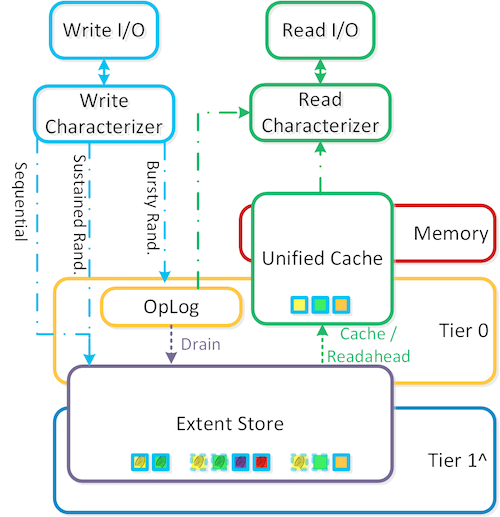This is one of the questions that do not exist on AHV. It is, however, a moderately important one for ESXi environment Nutanix or not. Why it is so and what does work best for ESXi on Nutanix – this is what I intend to unfold if you care to read.
Without going into nitty-gritty details but still explaining the essential differences between the formats provisioning types for VM disks define how the storage space is allocated for the VM disk. The tree options ESXi provides are:
- Allocate space when required. No guarantees for the space available on the datastore for the data of the disk to grow to the extent of the disk size configured. This is a Thin Provisioned disk. Location of data on physical storage is written in fragments. Accessing these fragments when reading and allocating space for new data is what may create additional latency for sensitive applications such as databases, for example.
- Allocate storage section for the entire VM disk file contiguously. Guarantee space available. This is Thick Eager Zero. When a disk is being created zeroes are written for the entirety of its capacity on the storage hence the name Eager Zero. Performance feel is similar to a guest OS disk after defragmenting – everything is in order and the data is written as a continuous flow, so to speak. Since it takes less time to access the data during the read operation and the space is pre-allocated, the write operation does not suffer latency overhead this type of disk provisioning is considered to be optimal for performance-centric applications.
- Thick Lazy Zero is a mix of the two.
‘Which one do I choose’, you ask. One more thing to consider and you will be able to answer the question yourself, I promise.
Nutanix does not write zeros by design. When you create a Thick Eager Zero on the storage layer (Nutanix DSF) the behaviour is the same to creating a Thin Provisioned disk. Do you gain performance or do you lose performance? Is it better or is worse for you? The answer is ‘It is different’ on Nutanix then it would be on a traditional non-HCI system.
Nutanix was designed with performance in mind. Read/write latency is decreased by the use of the OpLog which is file-specific and is always located on Tier 0.

On a Nutanix system, there is no performance difference between thin and thick disks. This means that a thick eager zeroed virtual disk has no performance benefits over a thin virtual disk. With Nutanix, a thick disk is the one that includes a field in the configuration, which means that the resulting disk will be the same whether the disk is a thin or a thick disk (despite the configuration differences).
I hope the above clarifies some things for you. Let me know in the comments if you have any questions.
KB-1591 Virtual disk provisioning types in VMware with Nutanix storage



